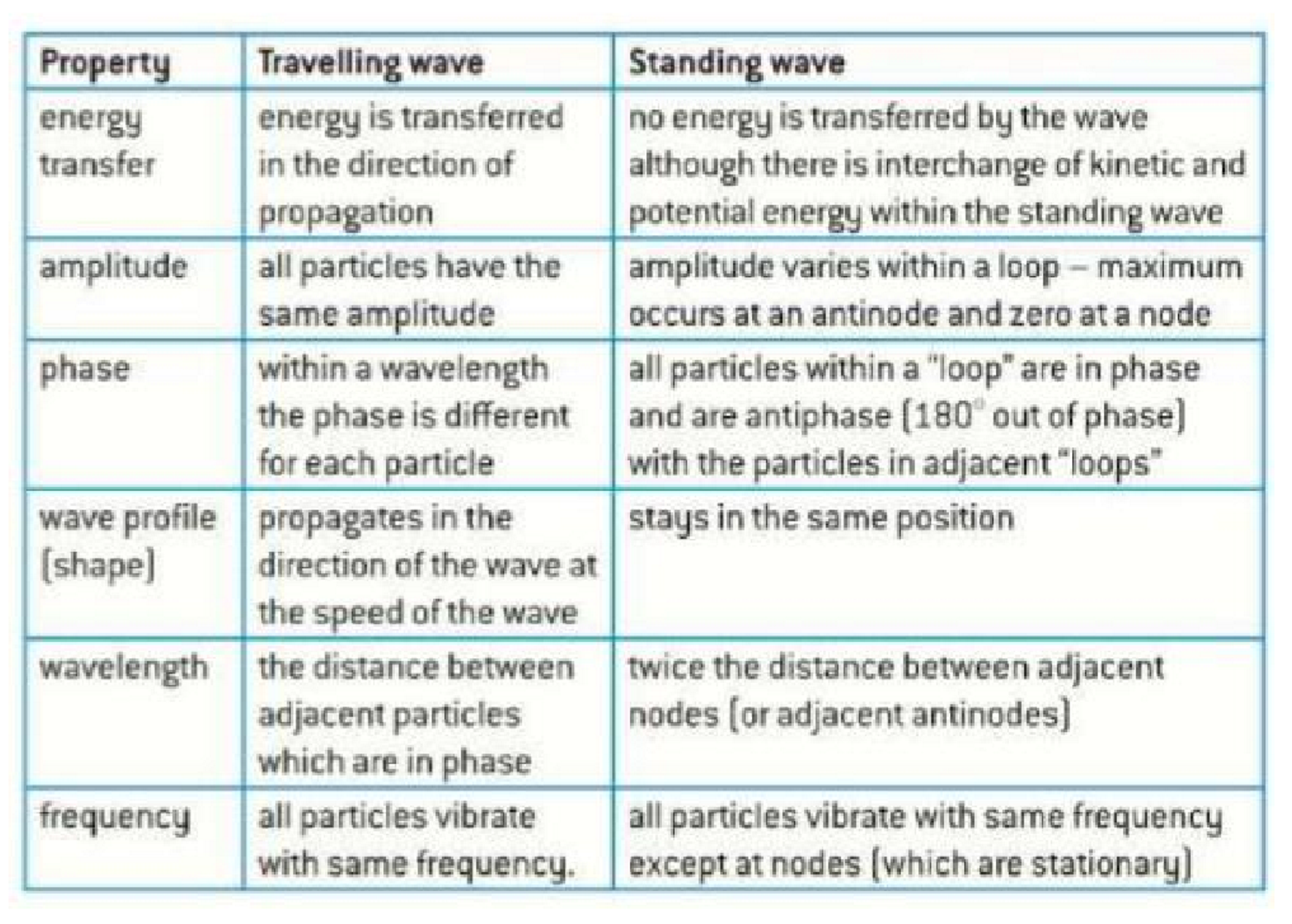3.3.1 progressive + stationary waves
1/25
Earn XP
Description and Tags
Name | Mastery | Learn | Test | Matching | Spaced |
|---|
No study sessions yet.
26 Terms
define amplitude
a wave’s maximum displacement from its equilibrium position
define frequency
number of cycles of vibration of a particle/waves passing a point per second
define wavelength
the distance between successive peaks/troughs
or distance from a point on a wave to the same point on the next wave
what is a period
time taken for one full oscillation
or time for one complete wave to pass a fixed point
what is phase
the position of a certain point on a wave cycle.
it can be measured in radians, degrees or fractions of a cycle
what is a cycle
one complete cycle is from maximum displacement to the next maximum displacement
what is a progressive wave
a progressive wave transfers energy from one point to another without transferring matter. It is made up of particles of a medium oscillating
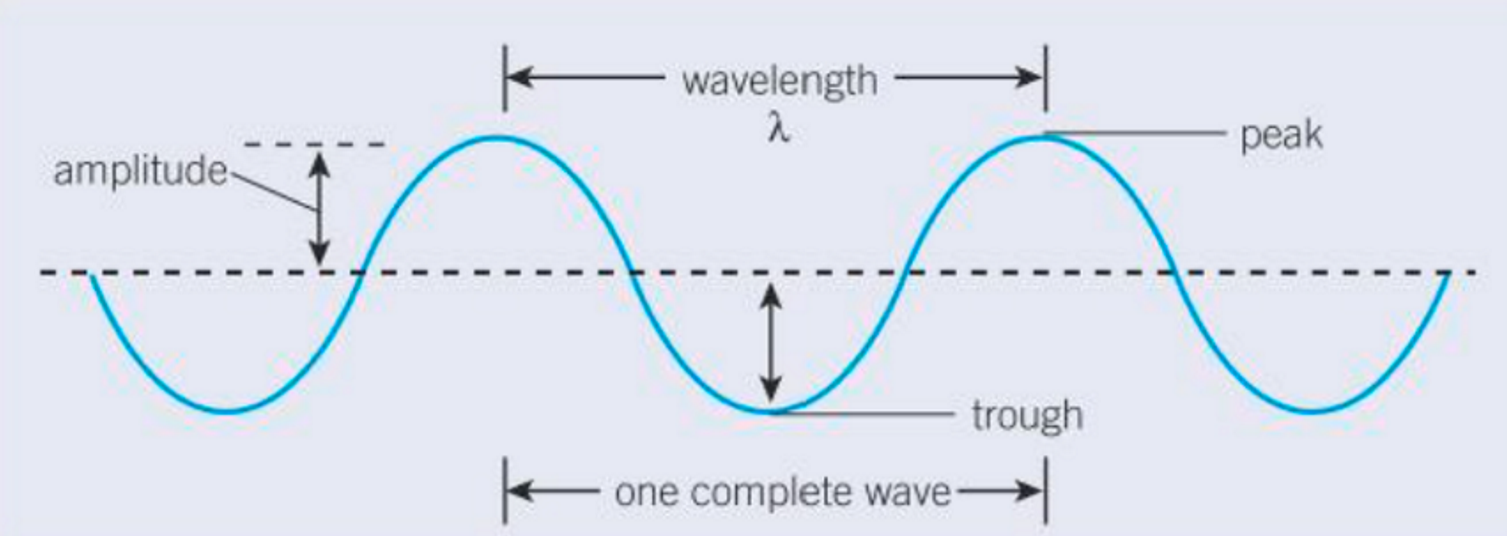
equation for speed
c = fλ
speed (m/s) = frequency (Hz) x wavelength (m)
equation for frequency
f = 1/T
frequency (Hz) = 1/time period (s)
converting degrees into radians and vice versa
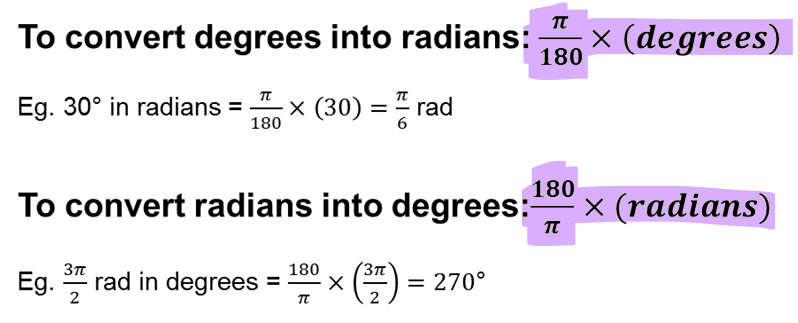
transverse waves: define and give examples
oscillations are perpendicular to the direction of energy transfer
all EM waves are transverse and travel at 3 × 10^8 m/s in a vacuum
e.g. EM, seismic (S) waves, guitar string

longitudinal waves: define and give example
oscillations are parallel to the direction of energy transfer
made up of compressions and rarefactions + can’t travel in a vacuum
can be shown on a slinky spring
e.g. sound + ultrasound, seismic (P) waves

define polarisation
polarisation is the filtering of waves to only oscillations in one plane by putting a filter on it
explain polarisation as evidence for the nature of transverse waves
a polarised wave oscillates in only one plane
polarisation can only occur if a waves’ oscillations are perpendicular to its direction of travel
longitudinal waves cannot be polarised because they oscillate parallel to the direction of travel
investigating light intensity with two polarisers
If an unpolarised light source is placed in front of two identical polarising filters, A and B:
if they have the same transmission axis (filters are parallel) the maximum intensity of light is transmitted → filter A will polarise light in a certain axis → all polarised light from Filter A will pass through Filter B unaffected
as one of the filters is rotated, the light intensity observed reduces periodically
when they are perpendicular, the minimum intensity of light is transmitted → filter A will polarise the light in a certain axis and none of the polarised light will pass through filter B
applications of polarisers
polaroid glasses/sunglasses/windscreens - reduces glare by polarising the light
camera - to reduce glare, enables photographers to take photos of objects underwater
radio + microwave signals - receiving signals at full strength
how polaroid lenses work
contain polarising filter with transmission axes that are vertically oriented
do not allow horizontally polarised light to pass through/block out horizontally oriented light waves
when light is reflected from a reflective surface, it undergoes partial plane polarisation
therefore polaroid lenses (in sunglasses etc) reduce the glare of any reflective surface as the partially polarised light will be eliminated by the polarising filter
how polarisation for signal transmission work
broadcasting towers always send either vertically or horizontally polarised signals.
receiving aerials must be positioned accordingly, in the same plane, in order to receive the signal at full strength
define stationary waves
stationary waves are formed from the superposition of two identical (coherent) progressive waves travelling in opposite directions.
energy is stored (not transferred)
have variable amplitude

4 conditions for a stationary wave to form
same frequency
similar amplitude
constant phase relationship
travelling in opposite directions
types of interference
constructive interference → occurs when two waves have displacement in the same direction
destructive interference → occurs when one wave has positive displacement and the other has negative. total destructive interference occurs if the two waves have equal but opposite displacements.
what are nodes and antinodes
a node is formed when the wave superposes to create a point of minimum displacement.
an antinode is formed when the wave superposes to create a point of maximum displacement.
the distance between adjacent nodes (or antinodes) is half a wavelength
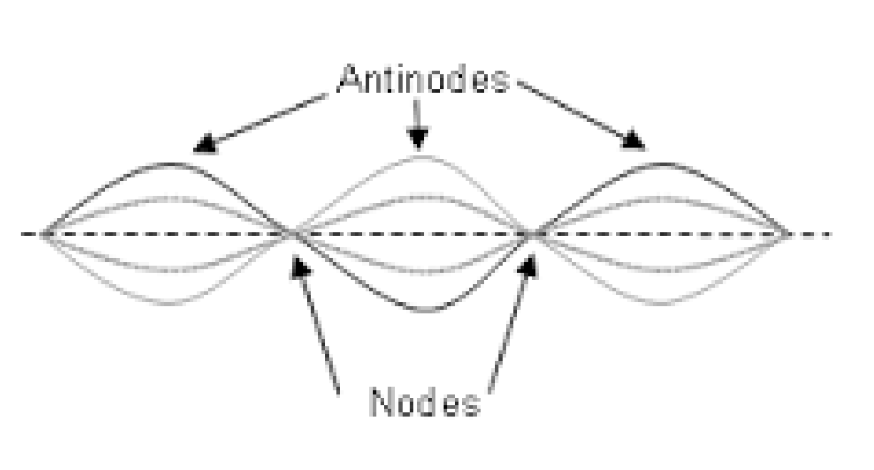
formula for first harmonic
L = length of string
T = tension
μ = mass per unit length
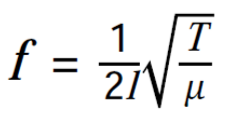
what is the first harmonic
the lowest frequency at which a stationary wave forms is the first harmonic. this forms a stationary wave with two nodes and one antinode.
how is a stationary wave formed in a pipe?
waves travel to the boundaries and are reflected off
the two waves travelling in opposite directions superpose to create a stationary wave
closed end is a node and open end is an antinode
node = no displacement/amplitude and waves destructively interfere, antinode = maximum displacement and constructive interference
difference between stationary and progressive waves
